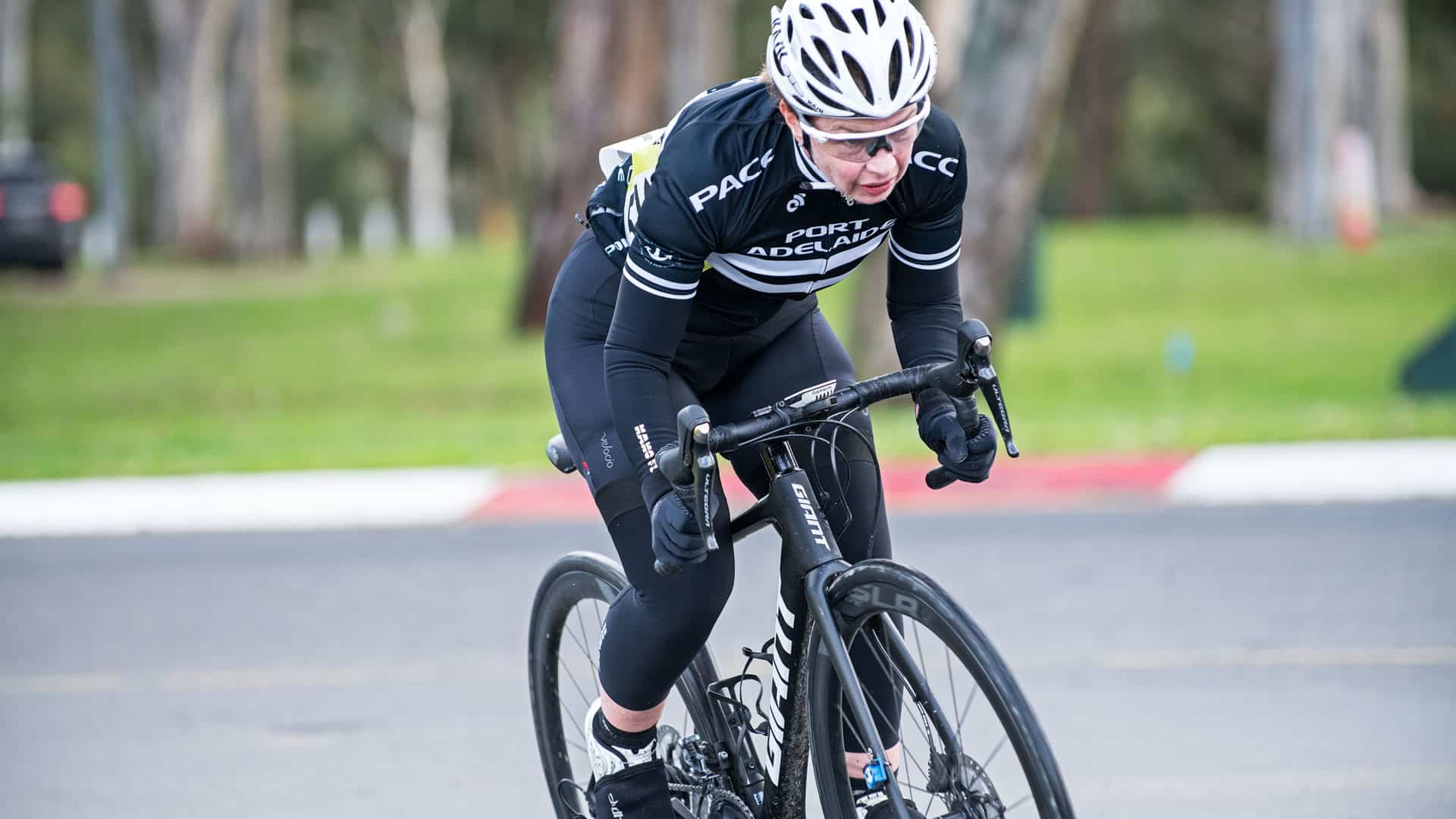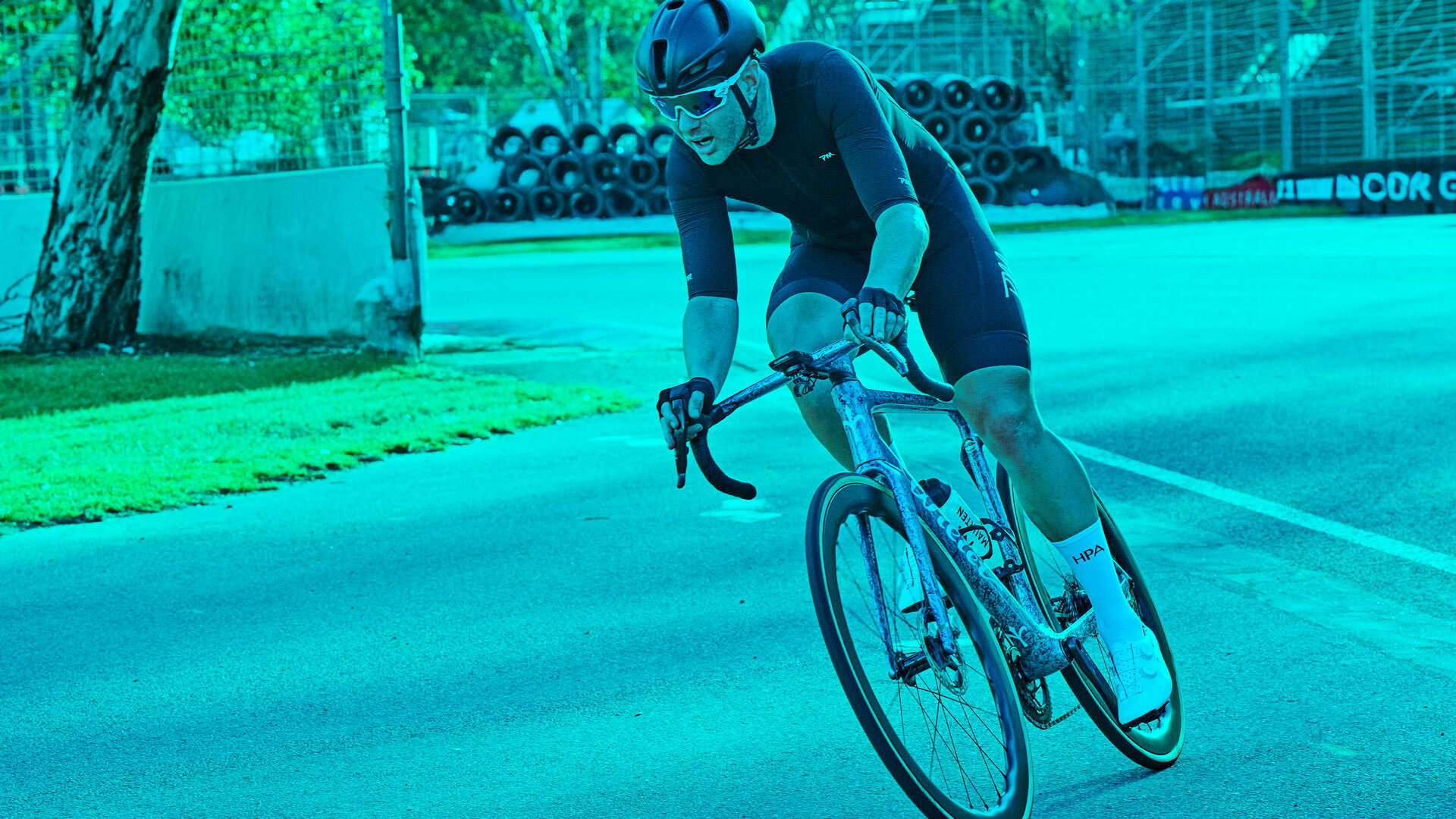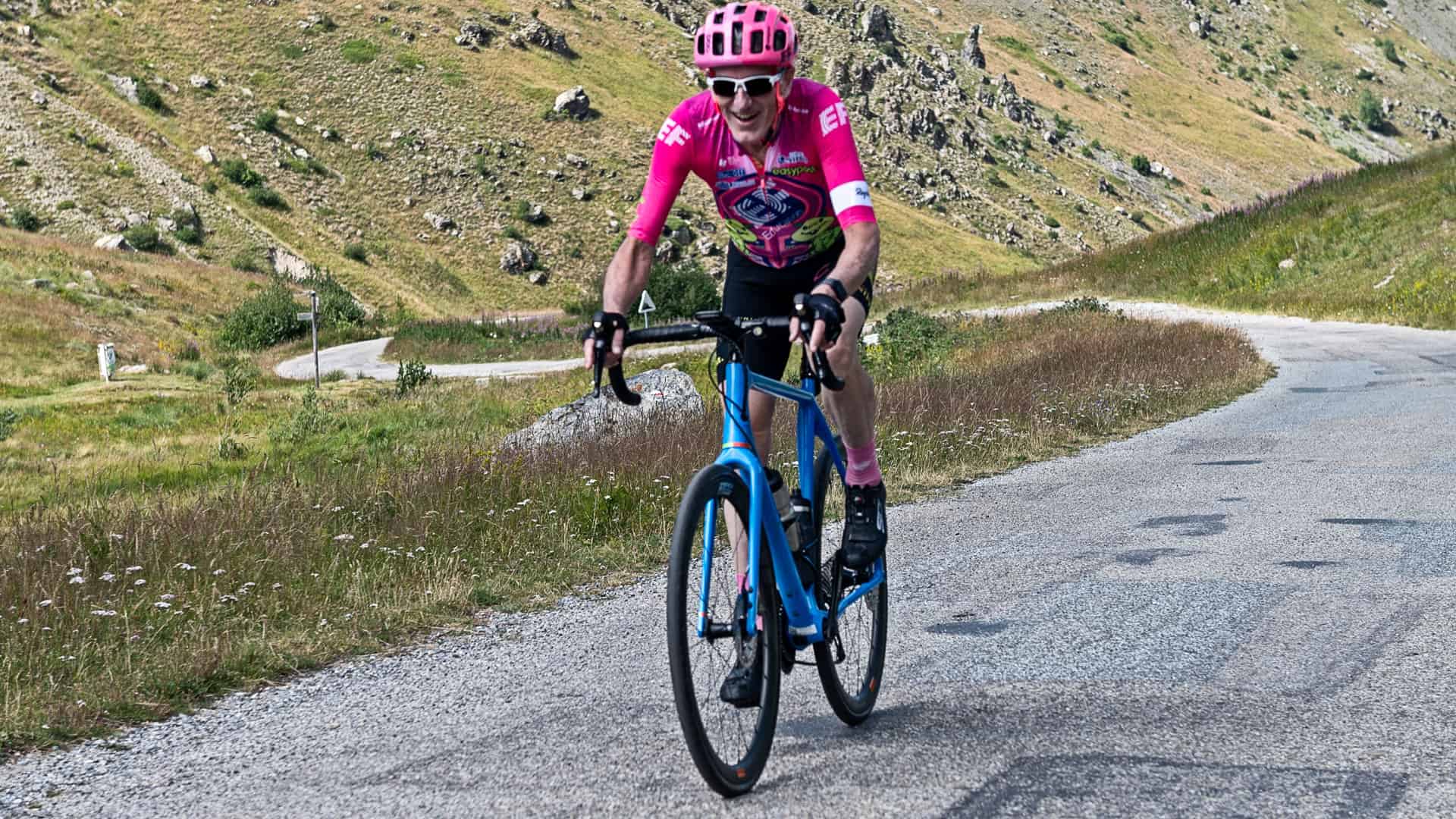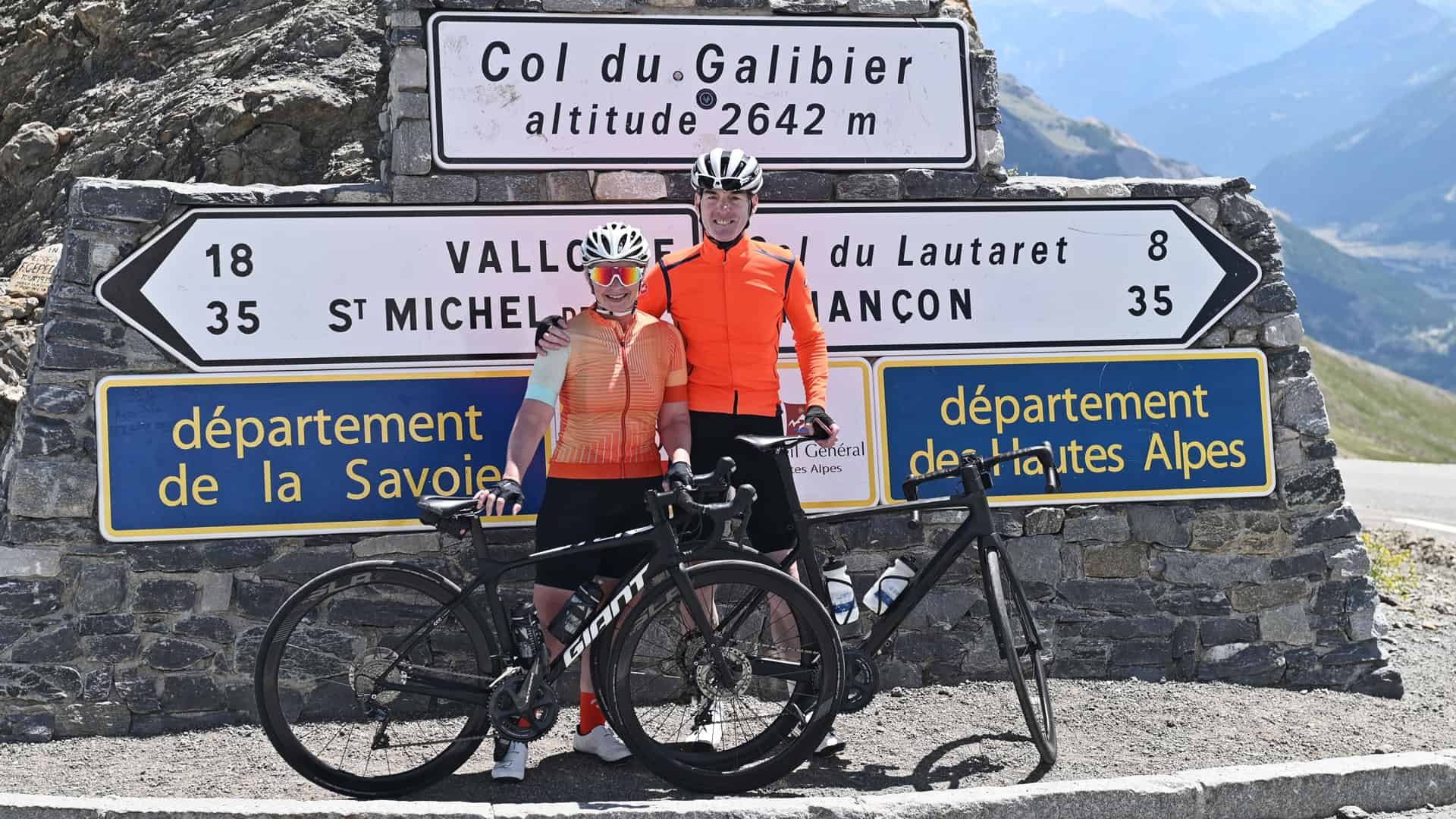But there are four other levels of our cycling performance that they need to also address to make sure that they get a really good boost with their cycling.
If you are looking for a major breakthrough with your cycling performance then knowing the five levels of cycling performance that I discuss in this video will certainly help you.
Transcript
Hi, it’s David Heatley here from Cycling Inform. And today I’m going to be talking about the five levels of cycling performance.
So I’m just going to share my screen here.
So, this is a triangle that I’ve drawn here and at the top of the triangle, you’ll see the word, speed.
So this is a representation of an iceberg floating in the sea. And this wavy line here is a representation of the sea.
So a lot of cyclists, when they’re looking at improving their performance, they look towards doing speed work or high-intensity interval training to help them improve their performance. And I’ve got a few videos about how there’s some issues with speed work, but don’t get me wrong speed work’s still an important component. But there are four other levels of our cycling performance that we need to also address to make sure that we get a really good boost with our cycling performance.
So the first one down the bottom here is consistency.
Okay. Now the reason why consistency’s really important to our training is that we need to be consistent with our training. Make sense, really, if we’re not consistent with our training, then we’re not going to be able to get consistent results with our cycling performance. There’s a couple of clients that I work with, two types of clients, the first type of client, they’re very consistent with their training, but the training that they’re doing is not meeting the outcome that they want. So as a result, they don’t get a very good performance improvement. Now the type of client is a client that is having issues with consistency. All right. And we really need to address that issue around consistency first, before we start on any of the other levels with their training, because if they’re not consistent with their training, then they’re going to have problems. And we’ve got a lot of tools that we use when we’re working with our clients to work on improving their overall consistency. So if you’re struggling with your consistency and we can certainly help you there.
All right. So the next level is base.
Okay. How big is your base? And base is, we sometimes call it endurance. And the thing about base training is that say you’re riding for an event that’s maybe 170 kilometres long. Now a lot of people think when they’re training for an event like this, that they need to sit on a home trainer for 60 minutes and smash themselves silly doing some high intensity interval training to help them in this area here.
But what the problem is that they’re not actually working on improving what we call their level of fatigue. So say their event’s 170 kilometres long, and they get maybe an hour into the event. And they find that after that point, they start getting really tired.
So the next thing we need to work on with our clients is making sure that we’ve got enough endurance within the training to be able to complete the event. So say they’re racing 80 kilometres and again, it’s important, that’s a kilometre, that they have enough endurance to get to the end of the event here. So, that’s the next level is working on endurance.
Then we work on strength.
Okay. So once we’ve got the athlete to a level where we’ve got them being able to get to the event without being fatigued too much, then we want to start working on their strength. Now strength’s used for hill climbing, to improve your speed on hill climbing. It helps with your FTP. So does base training as well. And also helps with bunch surges and riding in fast bunches. I’ll just put a fast B here.
All right. So strength work really helps us develop enough power to be able to climb hills faster and improve our FTP and all those sorts of things. And these things here, strength and base training, these are developed slowly and they’re lost slowly. So if you find that there’s inconsistencies in your performance, that one day you riding really well and the next day you’re riding really not very well, then by working on your strength and base training, you can help improve that.
So we do a lot of work in this area here. And the interesting thing is that strength and base training is what actually builds a bigger engine. A lot of people think that it’s speed training that builds a bigger engine, but speed training’s a little bit like nitrate, adding nitrite to a car. It’s like when you add nitro to a car, the car goes faster, but when you take the nitro away, you left with the same car, and speed training is developed quickly, and it’s also lost quickly. And it doesn’t actually really build a bigger engine. It’s like I say, adding nitro to a car, and there’s also a ceiling to how much speed training you can do before you start plateauing and going backwards.
And speed training is built on the foundation that we’ve got below here. So we spend a lot of time working on our clients on building a bigger engine, so instead of driving around and cycling in something like a Toyota Yarus or a Toyota Echo, one of those small round town type of cars that struggle out on the open highway, we actually build a bigger engine in our athletes in the area of base and strength to improve all aspects of their cycling. And then when we add speed work to them, they get a really good lift.
So, and the final level here is technique.
So cycling is very much like swimming in that technique is really important for developing efficiency. So this is where we develop efficiency in their riding. And what it does is that when you’re doing endurance events or racing events, it means that you’re able to have less fatigue over that event. And it means that you’re able to develop more power and better performance for the overall ride without fatiguing so quickly. So techniques are really super important. And we spend a lot of time working with our clients on technique because let’s face it, a lot of people that come onto our programmes really haven’t been professionally taught how to peddle a bike properly or develop really good, efficient, smooth pedalling power through a lot of the peddling stroke. So we spend a lot of time working on developing good technique at higher cadences and at low cadences.
Anyway, so those are the five levels.
I hope that helps identify some of the areas that you may want to consider focusing your attention on.
Of course, we’re here to help you. So if you need any help with your overall training, I’ll just stop sharing my screen.
So if you need help in preparing for your racing or recreational rides that you’re looking at doing in the future, certainly reach out and contact us, and I’m sure we’ll be able to help you out.
Anyway, it’s been David Heatley here from Cycling Inform. Hopefully, you’re enjoying these videos and if you like them, give us a bit of a thumbs up and also, follow our channel. All right. Take care and be awesome on the bike.





Leave A Comment